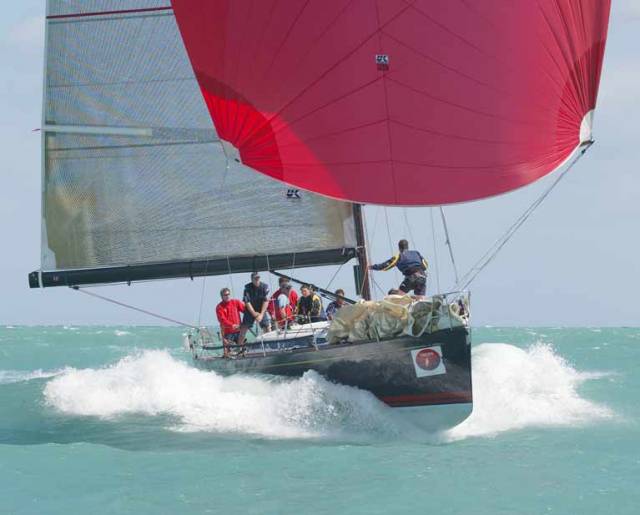West Cork native Barry Hayes took over the UK Sailmakers Ireland loft a year ago From Des McWilliam, having returned to Crosshaven from an international career in sailmaking. Afloat.ie asked him about his own sailing background and the changes he has seen in Irish sailing in his first year home.
Afloat.ie: You worked for Des McWilliam for five years at the Crosshaven loft from 1999 to 2003 before heading overseas. How was that?
Barry Hayes (BH): Well, there is no one better to learn from than Des. He was so well respected and his knowledge was outstanding. McWilliam Sailmakers was at its height in those years, I got a fantastic foundation on how to build sails. Although busy, it was still a small sail loft which gave me the opportunity to learn every aspect of sailmaking from start to finish. From simple tasks like cutting sail numbers (which is crucial for developing your scissors skills!) to joining panels and marking up sails, to putting the finer finishing details to patches and rings. It is often underestimated the time, attention, skill, and detail that goes into building sails - in those days it really was an art. Nowadays there is much more science involved, but the art is ever present, and its importance shouldn't be underestimated! It really couldn’t have been a better place to start my sailmaking career.
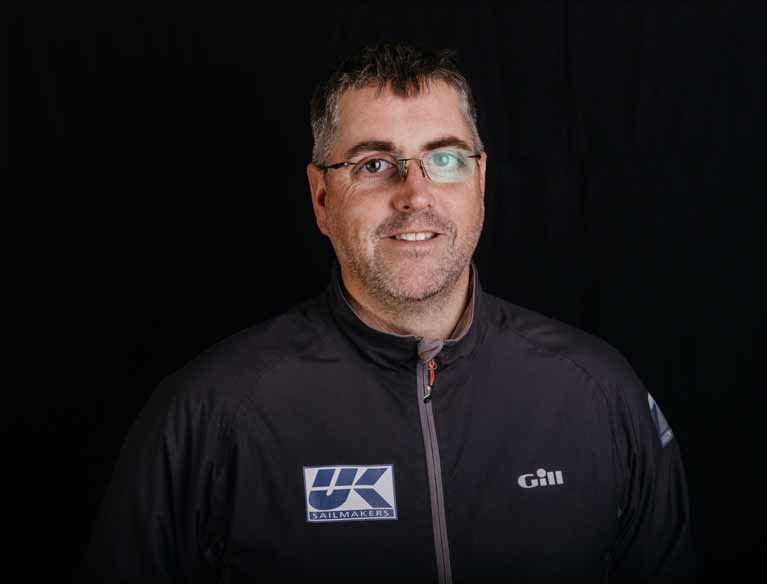 Barry Hayes, loft manager of UK Sailmakers Ireland at Crosshaven
Barry Hayes, loft manager of UK Sailmakers Ireland at Crosshaven
Throughout these years I also raced a lot of different boats from the famous Cracklin' Rosie to J24s and everything in between. Spending so much time afloat, while having such a large knowledge base to draw from at the loft, produced a rapid improvement in both my sailing and also sailmaking skills. You relate what you are doing on the floor to what you see in front of you afloat. Why this works better than that. Why we add depth in places and remove it in others, and how this is done by broad seaming and luff curve. Any question of trim, optimisation, or efficiency was answered at Monday morning coffee break - and there were plenty!
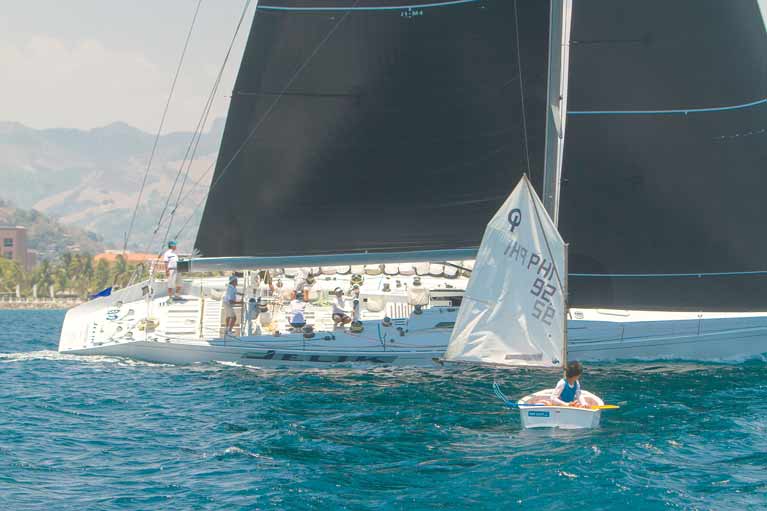 The 76ft maxi Jelik
The 76ft maxi Jelik
Afloat.ie: You moved to a new job in sailmaking in New York for four years until 2007. What did you do there?
BH: Moving to New York to work for UK NY was a huge step forward in every way. There the very first project I did was work on making traditional hand made sails for Lion's Whelp. It took us three months to make and hand stitch every seam. All the skills I had picked up in Ireland were tested and refined. Talk about out of the frying pan and into the fire!
Swan 45’s one design racing was big in the US at the time. I start racing on Devocen (pictured top), doing races up and down the east coast of the US, from Newport to Key West. It was non stop action and a great learning experience. Working in the loft all week then heading to Key West for a regatta was fantastic - the truest representation of the sailmaker's lifestyle. While in New York I started working for UK International developing our string sail production process called Ultra. This is where art met science head-on. This taught me the intricacies of how string sails are made and the technology behind them. This was right on the frontier of sailmaking at the time and being involved with it was an amazing experience; which would prove crucial in the future.
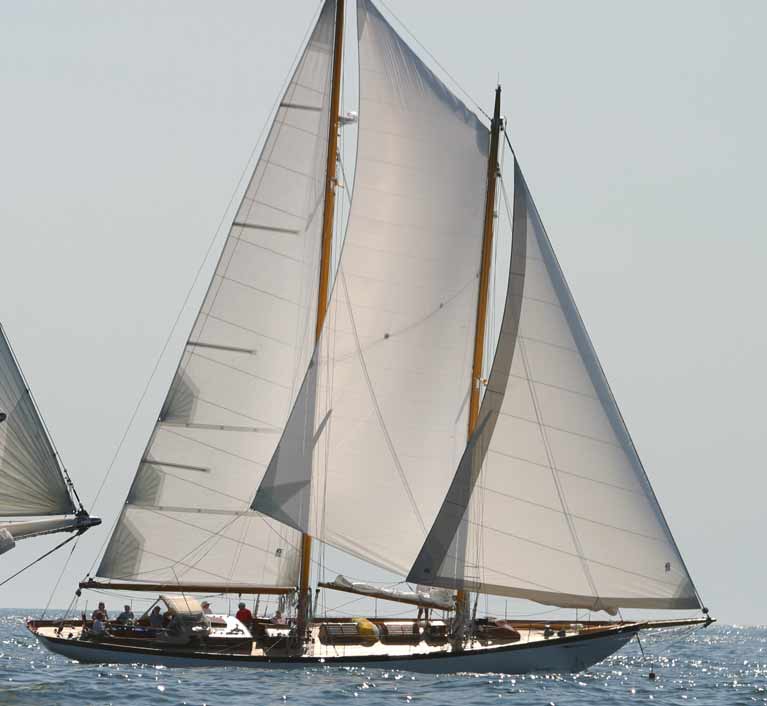 Traditional Schooner Lion's Whelp
Traditional Schooner Lion's Whelp
Afloat.ie: Then, you worked in Hong Kong for 14 years. Can you describe your role there?
BH: I started my job in UK Hong Kong as a sail designer and selling sails. Although in a familiar role; the culture and pace were intense in comparison to Ireland. I continued with this job for many years, progressing to a managerial role and working on some pretty big projects. Like China Team Americas Cup which was a huge technical learning curve. The loads and performance requirements for the IACC Cup yachts of the time were on a whole other level to anything I had experienced before - developing the technology required to satisfy them was quite a task. I was also heavily involved with Maiden HK which was a 115 Supermaxi. Which had the highest IRC rating in the world at the time. She was a truly one of a kind. I continue much of this work today with ongoing projects like Jelik a 76 ft Maxi and the China Cup which runs a fleet of 30 First 40.7s in One Design configuration.
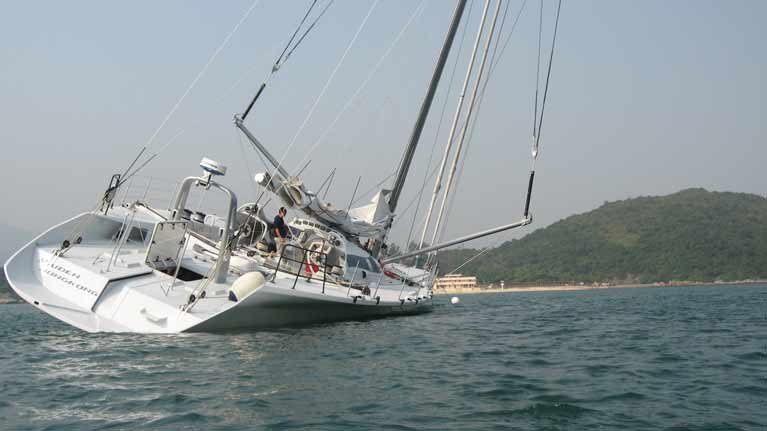 Maiden HK a 115–foot Supermaxi
Maiden HK a 115–foot Supermaxi
One of the biggest projects I worked on while in Hong Kong was the development of our "Titanium" sail moulding system. It was a 5-year project focused on producing an innovative moulding and manufacturing process to produce high-performance sail membranes. Technically, it was a massive challenge. The experience I had gained from my time in New York and Ireland culminated in the Titanium development project. You can't simply jump into these things, it takes a lot of experience to push beyond what is known. Knowledge of sailing and sail design are crucial - you need to know what the end goal is - but knowledge of the technical processes of moulding, lamination, material interactions, and mechanical engineering was crucial. We were building machines that simply didn't exist. It was, and still is, a very exciting and absorbing project to be involved with. If you had told a teenage Barry Hayes from Schull that he would be developing performance moulded sail technology in Hong Kong in fifteen years time I can honestly say I wouldn't have believed you!
"If you had told a teenage Barry Hayes from Schull that he would be developing performance moulded sail technology in Hong Kong in fifteen years time I can honestly say I wouldn't have believed you!"
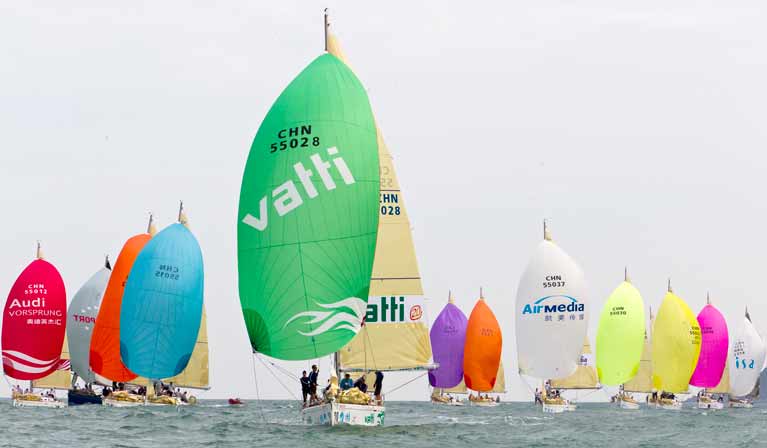 China Cup racing
China Cup racing
BH: Everything, literally everything, from Ruffians, J70, J80, TP 52, Kerr boats, Mills boats, Maxis, AC45. It was a real mixed bag with a lot of variety.
Afloat.ie: What are the biggest changes you have found since moving back to Ireland after 20 years abroad?
BH: Safety is one of the biggest changes I have noticed since I've come back. People wearing their life jackets and EPIRBs. These little things have really changed our sport and made it much safer here. When I think back to some of the offshore races we did in Ireland twenty year ago it boggles the mind to think about what we were wearing, or more to the point, what we weren't wearing!
The other main change I have seen is the lack of young people buying boats in the sport. This has to change in Ireland for it to be a sustainable sport going forward. It is certainly not an easy nut to crack. The appearance of many U25 teams in the past few years is a great initiative and more of the same can only benefit the sport.
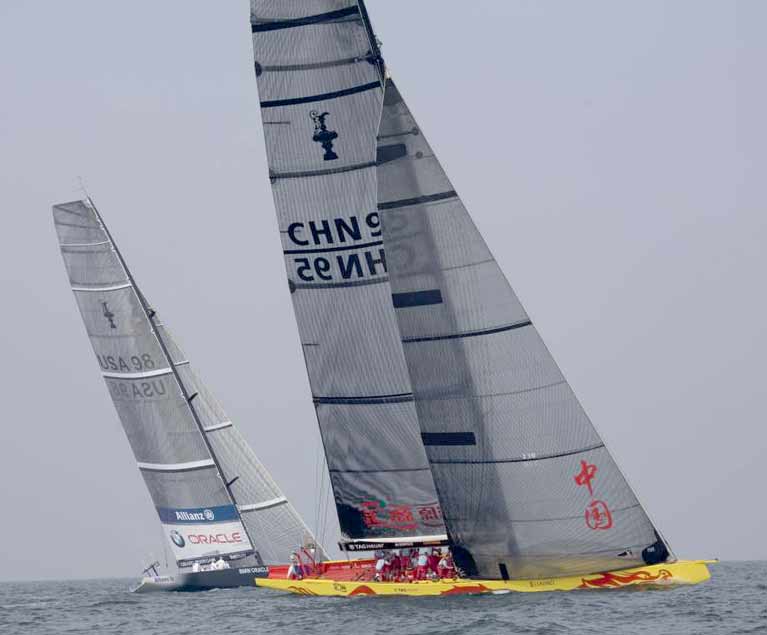 China Team 1
China Team 1
Afloat.ie: In terms of sailmaking technology, what have been the biggest developments in the past few years, and are we seeing them in Ireland?
BH: Moulded sails is an obvious one - we are one of the only sailmakers making truly one-piece moulded sails. That is the entire sail structure formed on the mould, not panels which are formed on a flat surface and then joined on a mould. These performance sails are making their way into Irish waters, with many more on the way for the 2019 season. This, in turn, has improved longevity, stability and shape retention - their lifetime, shape holding over varying wind conditions, and how long that shape remains throughout its lifetime. Light sails that last a season is a thing of the past. In the past, an Americas Cup sail would go through 30 tacks and was then put in the bin. Those days are gone. Jedi, a Dun Laoghaire based J109, purchased a mainsail for their 2017 Fastnet campaign. The sail has seen 2 full seasons of hard offshore racing and particularly arduous Round Ireland and the sail shape is still as good as new.
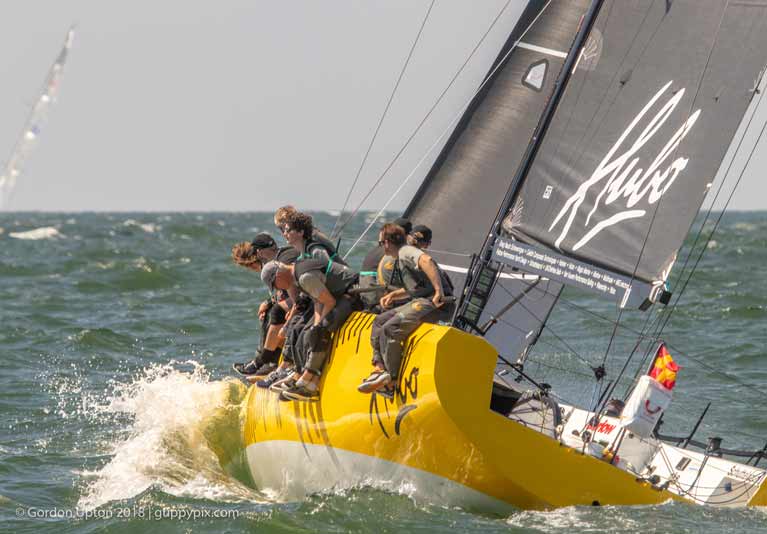 Warship 36
Warship 36
Afloat.ie: And what of the future? What do you see as the future trends for Irish sailing over the next decade?
BH: Technology wise there is a lot happening here. We are continually testing new products in Irish waters which ultimately will develop worldwide. Last year we had a J109 test jib which spent a lot of time afloat both here in Ireland and on the South Coast of the UK. There was a J80 experimental jib which was afloat in Howth, and more recently a 1720 jib used throughout the DBSC Spring Chicken series in Dun Laoghaire. There will be more of the same this year. I will stay tight-lipped for the moment but it'll be hard to miss soon enough. Sail technology is always evolving and improving, you cannot stop it, and there is no point in keeping up - we're at the forefront and are taking Irish sailors there with us.
More generally, I can see one design making coming back. It ebbs and flows over the years but classes like the J80 and 1720 are great learning platforms and provide excellent racing. Boats like this are training ground for young sailors to learn how to sail and get into the sport. This year we have seen in bigger boats coming into the country - which hasn't been the case for some time. Hopefully, this will continue and return the Irish big boat scene back to where it once was.


























